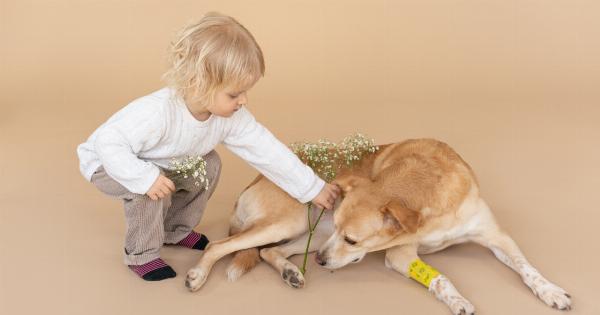Bringing a dog into the family can be a wonderful experience, especially for children who grow up with a four-legged friend. Dogs are loyal companions who provide unconditional love and affection.
However, it’s important to establish a strong bond between your child and the dog from the very beginning. Here are seven tips for creating a happy and healthy relationship between your child and the dog.
1. Establish rules and boundaries
Before bringing a dog into your home, it’s important to establish rules and boundaries for both the dog and your child. These rules should be clearly defined and consistently enforced.
For example, your child should learn not to disturb the dog while it’s sleeping or eating, and teach them to ask permission before petting the dog.
2. Teach your child to read dog body language
One of the most important things you can teach your child is to read dog body language. Understanding how a dog is feeling based on its body language can prevent injuries caused by unintentional provocation.
Teach your child to recognize signs of fear, aggression, and discomfort in dogs, and what they should do if they notice those signs.
3. Make time for training and socialization
Dogs need proper training and socialization to become well-behaved family members. Encourage your child to participate in training sessions, and include your dog in family activities as much as possible.
Dogs love to be included in family outings and will thrive when they feel like a part of the family.
4. Involve your child in your dog’s care
Teach your child to be responsible for the dog’s basic needs, such as feeding, grooming, and exercise. This will create a sense of responsibility and help your child develop a bond with the dog.
Make sure to supervise your child while they are taking care of the dog, especially when it comes to big tasks like walking the dog.
5. Set aside one-on-one time
To strengthen the bond between your child and the dog, set aside one-on-one time for them to spend together. Play games like fetch or tug-of-war, and watch your child and the dog interact.
This time should be focused on positive interactions and play, reinforcing the bond between the two.
6. Supervise all interactions
As much as you trust your child and your dog, always supervise interactions between the two. This will ensure that both the dog and your child are safe and comfortable.
If you notice any signs of discomfort or agitation, remove your child from the situation immediately.
7. Teach your child to respect the dog’s boundaries
Dogs, like people, have boundaries that should be respected. Teach your child not to pull on the dog’s ears or tail, and how to approach the dog without provoking fear or aggression.
Teaching your child to respect your dog’s boundaries will prevent injuries and allow for a happy and healthy relationship.





























